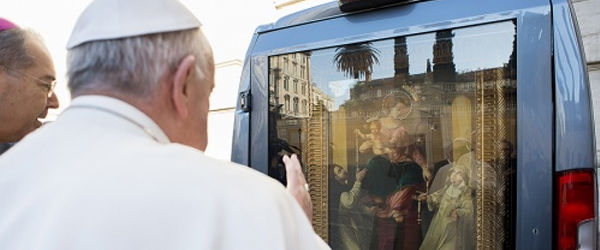eople who work in liturgical ministry — and especially the liturgical leadership in the U.S. — were praised by the U.S. Bishops’ Committee on Divine Worship in a statement marking the golden anniversary of modern liturgical reform.“Without your continued cooperation and self-sacrificing ministry, the implementation of the reformed liturgical rites after Vatican II, which have proven to be such a grace for the Church, could never have been undertaken,” said the statement, “Stewards of the Tradition: Fifty Years After Sacrosanctum Concilium.”The Committee on Divine Worship published “Stewards of the Tradition” on the website of the U.S. Conference of Catholic Bishops, after the document was approved by the USCCB Administrative Committee at its Sept. 10-11 meeting in Washington.Sacrosanctum Concilium, the Second Vatican Council’s Constitution on the Sacred Liturgy, was the first of 16 documents promulgated by the Council. Issued Dec. 4, 1963, its title is Latin for “This Sacred Council,” the first words of the document.The Constitution set the tone, in many ways, for subsequent documents from the Council in making particular emphasis on the promotion of liturgical formation and active participation by the people:“It is very much the wish of the church,” said the Constitution, “that all the faithful should be led to take that full, conscious and active part in liturgical celebrations which is demanded by the very nature of liturgy, and to which the Christian people — ‘a chosen race, a royal priesthood, a holy nation, a redeemed people’ — have a right and to which they are bound by their baptism” (SC, n. 14).The Divine Worship Committee’s reflections acknowledge the successes of the reform of the liturgy in the years following Vatican II, affirm the work of those engaged in the liturgical apostolate, and offer some guidance and direction for the future. Among the words of thanksgiving, affirmation and encouragement, the committee noted the importance of participation by the laity at Mass.“The liturgy always has been and always will be about our taking part, our experiencing again and again, through rites and prayers the central events of our redemption and sanctification in Jesus Christ,” said the statement.“We commend the great strides that have been taken to invite such engagement over the past 50 years: catechesis on the liturgy that has shaped the role of the liturgical assembly, the service of the faithful in a great variety of liturgical ministries, and the devotion of so many to the Real Presence of Christ in the Eucharist.”Addressing a variety of subjects within the liturgy, the committee emphasized the role of art and music.“The setting for the celebration of the liturgy should be beautiful,” the statement said, and “should reflect the best of our artistic heritage.”“Liturgical song has a preeminent place” in celebrating the liturgy, the statement said. “Not only is it a means of active participation, but it is another source of beauty that can lift hearts and inspire worship.” The statement added, however, that “To rely on the music of a single genre of style for the celebration of the liturgy is to diminish the breadth and depth of our liturgical heritage and to risk the exclusion of the legitimate contributions of particular cultures and composers.”To view the entire document, visit http://www.usccb.org/about/divine-worship/stewards-of-the-tradition.cfm.{gallery width=100 height=100}gallery/2013/1004/liturgy/{/gallery}

